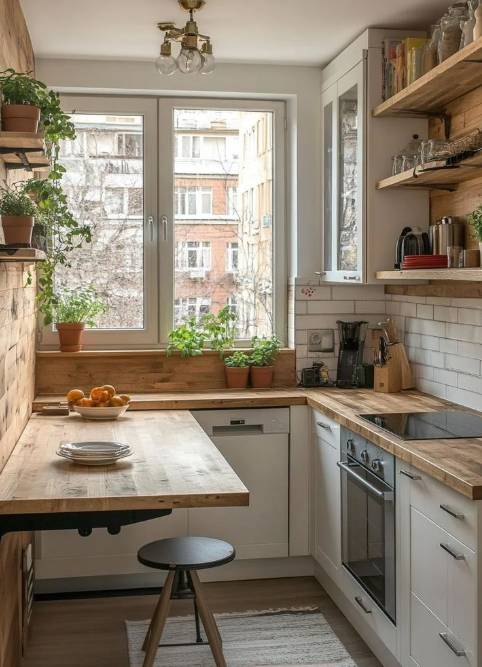The Art Of Living Small: Top Tips On Maximizing Functionality And Style In Small Spaces
In this day and age, small spaces are becoming more and more common, with the rise of inflation, small apartments and houses are all people can afford. Whether you’re dealing with an apartment, a studio or simply dealing with limited square footage, making the most of your space is key but it’s also important that your space feels like a home. There needs to be a balance between function and style and making the most of every square inch you have.
These are the top tips for maximizing your small space.
SIMPLE PAINT PALETTE
Having a minimal colour pallet in a small space can be quite important as many colours can make the space feel cluttered and even smaller. I’d suggest to keep to a neutral paint palette on the walls and then add your pop of colour and character through furnishings like rugs, throws, cushions and interesting furniture pieces. Through using a neutral pallet on the walls, you’re really opening the space up and making it appear larger than it is. Paired with plenty of natural light will really transform the space.
TAKE ADVANTAGE OF NATURAL LIGHT
Making a small space appear larger is all about creating an illusion with light and where the eye is naturally drawn to and windows automatically do that.
One challenge of working in a small space is limited natural light, as some areas may have no windows or access to sunlight. So if your space does have windows or doors, it's essential to take full advantage of them to maximize natural light. Instead of heavy curtains that weigh down a room, I’d opt for more light-filtering alternatives such as roman or roller blinds as they are made to simultaneously let light in but allow for privacy.
However, if your space does not have windows, where possible you could try bouncing the light from one room into the other through using mirrors on the opposite wall of h the window. In circumstances where getting natural light in is not possible, you could try spotlights that have a daylight setting to help give the illusion of natural light. Also using recessed lighting may brighten up the space and allow you to carry out certain tasks, especially important in small kitchens.
USE APPROPRIATE SCALE
The word itself “scale” might seem quite scary especially if you’re not a fan of mathematics but when it comes to design, I promise you, it’s not all that bad .(coming from someone who despises math’s)
In interior design, scale describes how the size of an object compares to the overall size of the space. Although often used interchangeably, "proportion" specifically refers to how one object relates to those surrounding it.
When designing a small space, the scale of your furniture is crucial to designing a space that you can actually move about freely in. For example in a small living room, I’d opt for 2 seater sofas or arm chairs rather than a large corner sofa that eats up floor space. It is also important that all the furniture within the space are visually proportionate with each other and differ from small to medium.
ADAPTABLE FURNITURE
When designing a small space and trying to make the most of said space, adaptable furniture is crucial to the functionality of the space not just the style.
Furniture with multiple functions, like foldable tables, sofa beds, and modular storage, enables a room to be used in different ways without overcrowding the space. These adaptable designs increase efficiency, enhance comfort, and optimize limited square footage, resulting in a more flexible and well-organized living area.
USE YOUR VERTICAL SPACE
Maximizing floorspace is one thing when designing a small space but don’t forget about all of the space you have vertically! We tend to cram everything into a space at eye-level and leave it at that but we forget to look up and so much space becomes unused. Instead, use floating shelves, tall bookshelves, climbing or large plants, wall mounted furniture and lighting and bespoke cabinetry.
However, be careful not to make too much use of your vertical space or it may overcrowd and appear to shrink your space further.












